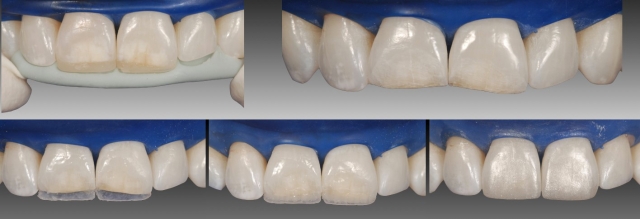Why You Should be Using Glycerin on Your Composite Restorations
By Greggory Kinzer on January 14, 2019 | 8 commentsHow do you lessen the sticky oxygen-inhibited layer on composite restorations?
This question is of some import to me as direct composite is often now my first choice when restoring anterior teeth due to its conservative nature (see Figures 1, 2, 3).
(Click the link for an article on treatment planning for anterior restorations.)



When composite is light cured, oxygen in the air causes an interference in the polymerization resulting in the formation of an oxygen inhibition layer on the surface of the composite. The oxygen-inhibited layer is the sticky, resin-rich uncured layer that is left on the surface. Although this layer can be removed by finishing and polishing the restoration, it will typically get in your bur or disc, thereby causing it to be inefficient or useless.
In order to minimize the presence of an oxygen-inhibited layer, it has been recommended that the final cure of the composite be completed through a Mylar strip (for interproximal restorations) or through an application of glycerin or a similar such material applied to the surface (for more complex facial/palatal and occlusal surfaces).1
When using glycerin, the final curing is completed through the glycerin. The glycerin is then rinsed off prior to finishing and polishing. The result is a harder composite surface that is easier to finish.
It must be noted that this oxygen-inhibited layer can also form on the margins of indirect restorations that have been bonded with resin cements, so it is advisable to also use glycerin on the margins of these restorations – especially if you are not routinely finishing back the margins.
(Click this link for more dentistry articles by Dr. Gregg Kinzer.)
Gregg Kinzer, D.D.S., M.S., Spear Faculty and Contributing Author
References
1. Effect of glycerin on the surface hardness of composites after curing
Hyun-Hee Park, In-Bog Lee. J Kor Acad Cons Dent 2011;36(6):483-489.
Comments
October 31st, 2016
December 12th, 2018
December 12th, 2018
December 12th, 2018
January 21st, 2019
January 21st, 2019
February 9th, 2019
February 12th, 2019